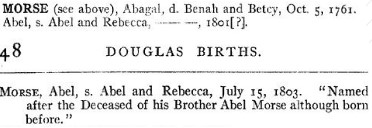 It is urban legend that I got my start doing human genealogy by tracing Thoroughbred horse pedigrees when I worked at Claiborne Farm in Kentucky in the early 1970s. I was already familiar with the five-generation pedigree chart before I got there, which was a great help as I typed (pre-computer days) the pedigrees for every horse on a farm with more than 1,000 horses. My boss, “Bull” Hancock, had a ring binder that held two half-page sheets of five-generation charts. The stallions’ sheets were in the top half of the binder and the mares’ sheets in the bottom half. When the time came to plan a mating, Bull could flip the sheets matching mares to stallions. Continue reading Hope for the best
It is urban legend that I got my start doing human genealogy by tracing Thoroughbred horse pedigrees when I worked at Claiborne Farm in Kentucky in the early 1970s. I was already familiar with the five-generation pedigree chart before I got there, which was a great help as I typed (pre-computer days) the pedigrees for every horse on a farm with more than 1,000 horses. My boss, “Bull” Hancock, had a ring binder that held two half-page sheets of five-generation charts. The stallions’ sheets were in the top half of the binder and the mares’ sheets in the bottom half. When the time came to plan a mating, Bull could flip the sheets matching mares to stallions. Continue reading Hope for the best
Category Archives: Technology
Multiple versions
In checking a source for an article in Mayflower Descendant, I was reminded of the need to check the various versions of early vital records. For many towns in Massachusetts, there are often three pre-1850 versions: 1) the published transcription (often called the “tan books”), 2) the Jay Mack Holbrook collection (on microfiche at NEHGS and digitized on Ancestry.com), and 3) the original vital records (often on microfilm and sometimes digitized on familysearch.org and/or Ancestry.com). Our handbook to New England genealogy is useful in determining which versions beyond the original records exist. Continue reading Multiple versions
JSTOR.org
 In days of yore, when I was in college, locating published articles on historical topics required hours sifting through library stacks and individual journal indexes, then laboriously photocopying each page of each article. Thankfully, in today’s digital world, we have JSTOR.org, with instant access to full indexes of every journal in their collection (not limited to historical titles) and the ability to download PDF files of the articles to our desktop and print at home. Continue reading JSTOR.org
In days of yore, when I was in college, locating published articles on historical topics required hours sifting through library stacks and individual journal indexes, then laboriously photocopying each page of each article. Thankfully, in today’s digital world, we have JSTOR.org, with instant access to full indexes of every journal in their collection (not limited to historical titles) and the ability to download PDF files of the articles to our desktop and print at home. Continue reading JSTOR.org
A worthwhile pursuit

May is Jewish Heritage Month, so in its honor I decided to look into my own Jewish heritage.
Even though I work at a genealogical society, I always felt that it was a worthless pursuit to try to trace my genealogy back many generations. My great-grandparents and some of my great-great-grandparents were the ones who immigrated to the United States in the 1910s and 1920s. Due to language differences, various names, changing borders, and not even knowing exactly where they were from (“somewhere in Russia” or “maybe Bialystock,” my grandparents would say), I never really gave it a shot. Continue reading A worthwhile pursuit
The genealogist’s friend
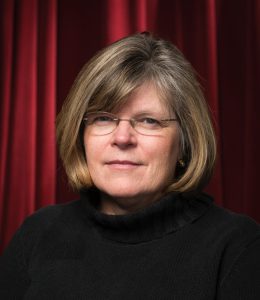 Shortly after I began work at NEHGS about ten years ago, we went into all-hands-on-deck mode. The occasion was the National Genealogical Society’s annual conference, which was in Boston that year and bringing many visitors to the building. A newbie, I was assigned the non-genealogical task of welcoming people at the door. The first person arrived, pulling a wheelie bag behind her. “Hello!” I said. “May I store your bag?” Everyone froze. A hushed silence fell. Finally someone clued me in: “Penny. That’s her research!” Oh. Continue reading The genealogist’s friend
Shortly after I began work at NEHGS about ten years ago, we went into all-hands-on-deck mode. The occasion was the National Genealogical Society’s annual conference, which was in Boston that year and bringing many visitors to the building. A newbie, I was assigned the non-genealogical task of welcoming people at the door. The first person arrived, pulling a wheelie bag behind her. “Hello!” I said. “May I store your bag?” Everyone froze. A hushed silence fell. Finally someone clued me in: “Penny. That’s her research!” Oh. Continue reading The genealogist’s friend
Correcting an error
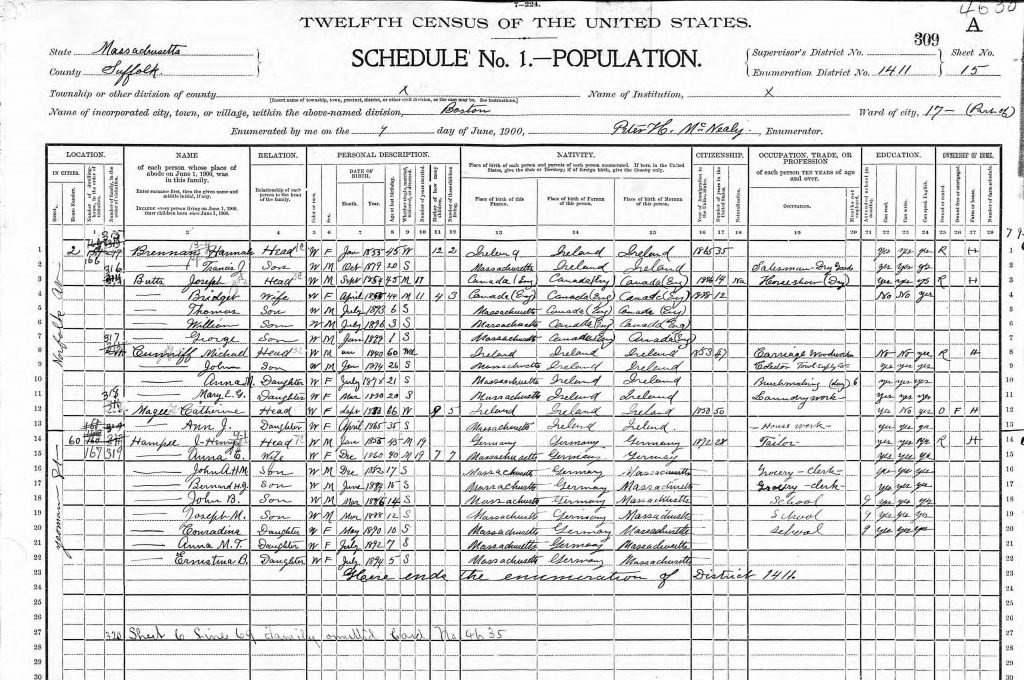 Recently, I’ve started visiting the cemeteries of my ancestors. Fortunately, most of my maternal ancestors stayed in the Boston area after immigrating, so it hasn’t been too difficult.
Recently, I’ve started visiting the cemeteries of my ancestors. Fortunately, most of my maternal ancestors stayed in the Boston area after immigrating, so it hasn’t been too difficult.
A few months ago, I visited St. Joseph’s Cemetery in West Roxbury in search of the headstone of my great-great-grandparents, John Henry and Anna K. (Ulrich) Hampe. After searching for some time, I finally came to the Hampe plot. Listed on the headstone are John and Anna, as well as their children Joseph M., Bernard J., Anna M., and B. Ernestine Hampe. Though I was happy to take a few pictures, I couldn’t help but feel a flicker of disappointment. With the exception of Joseph, the other Hampes buried at St. Joseph’s Cemetery only list their birth and death year, rather than the full dates of those events. Continue reading Correcting an error
A hint of personality
 Behind the scenes, the NEHGS web team is hard at work preparing the searchable version of our Roman Catholic Archdiocese records. As part of that process, our volunteers create spreadsheets that associate information with a specific image file. I proofread these spreadsheets as part of our quality control process.
Behind the scenes, the NEHGS web team is hard at work preparing the searchable version of our Roman Catholic Archdiocese records. As part of that process, our volunteers create spreadsheets that associate information with a specific image file. I proofread these spreadsheets as part of our quality control process.
I’ve recently encountered some confirmation records and was intrigued by their potential value to genealogists. Most confirmation records do not contain parents’ names – they usually just consist of a last name, first name, date, and maybe a sponsor. Continue reading A hint of personality
Strong emotions
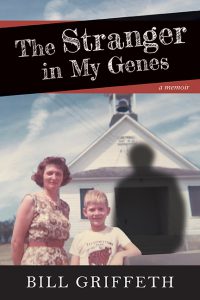 Several weeks ago I received an email from an acquaintance of mine, a man I will describe only as a prominent African American personality. Let’s call him Alex. He emailed to say he had read my book, The Stranger in My Genes, and he wanted to discuss something with me. Privately.
Several weeks ago I received an email from an acquaintance of mine, a man I will describe only as a prominent African American personality. Let’s call him Alex. He emailed to say he had read my book, The Stranger in My Genes, and he wanted to discuss something with me. Privately.
My book, published by NEHGS, tells the story of a DNA test I took to help a cousin with his genealogical research. The results were shocking. They revealed that my father was not my father. Since it was released in September of 2016, I have heard from dozens of people – friends and strangers – who have had similar experiences. I assumed Alex was only the latest. Continue reading Strong emotions
Online mug books for Canada
 While preparing for a consultation this week, I stumbled across a marvelous online site for digitized local history books: Ourroots.ca (http://www.ourroots.ca). The site is maintained by the University of Calgary and seeks to “preserve Canada’s unique identity for future generations through the use of digital technology.”
While preparing for a consultation this week, I stumbled across a marvelous online site for digitized local history books: Ourroots.ca (http://www.ourroots.ca). The site is maintained by the University of Calgary and seeks to “preserve Canada’s unique identity for future generations through the use of digital technology.”
I was looking for information about the early settlers of the tiny community of Biddulph in Huron County, Ontario. Continue reading Online mug books for Canada
The Miller sisters
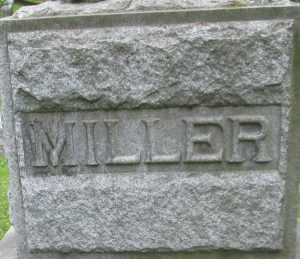
Steven Weyand Folkers’ comment on a recent post – regarding a father and son both marrying women surnamed Miller, but from unrelated families – reminded me of a similar example in my own research several years ago with two Davis sisters who had married men named Miller.
This project started with trying to identify the children of Clark Davis (1803–1881) and his wife Philena Franklin (1811–1882) of Steuben County, New York. Continue reading The Miller sisters
